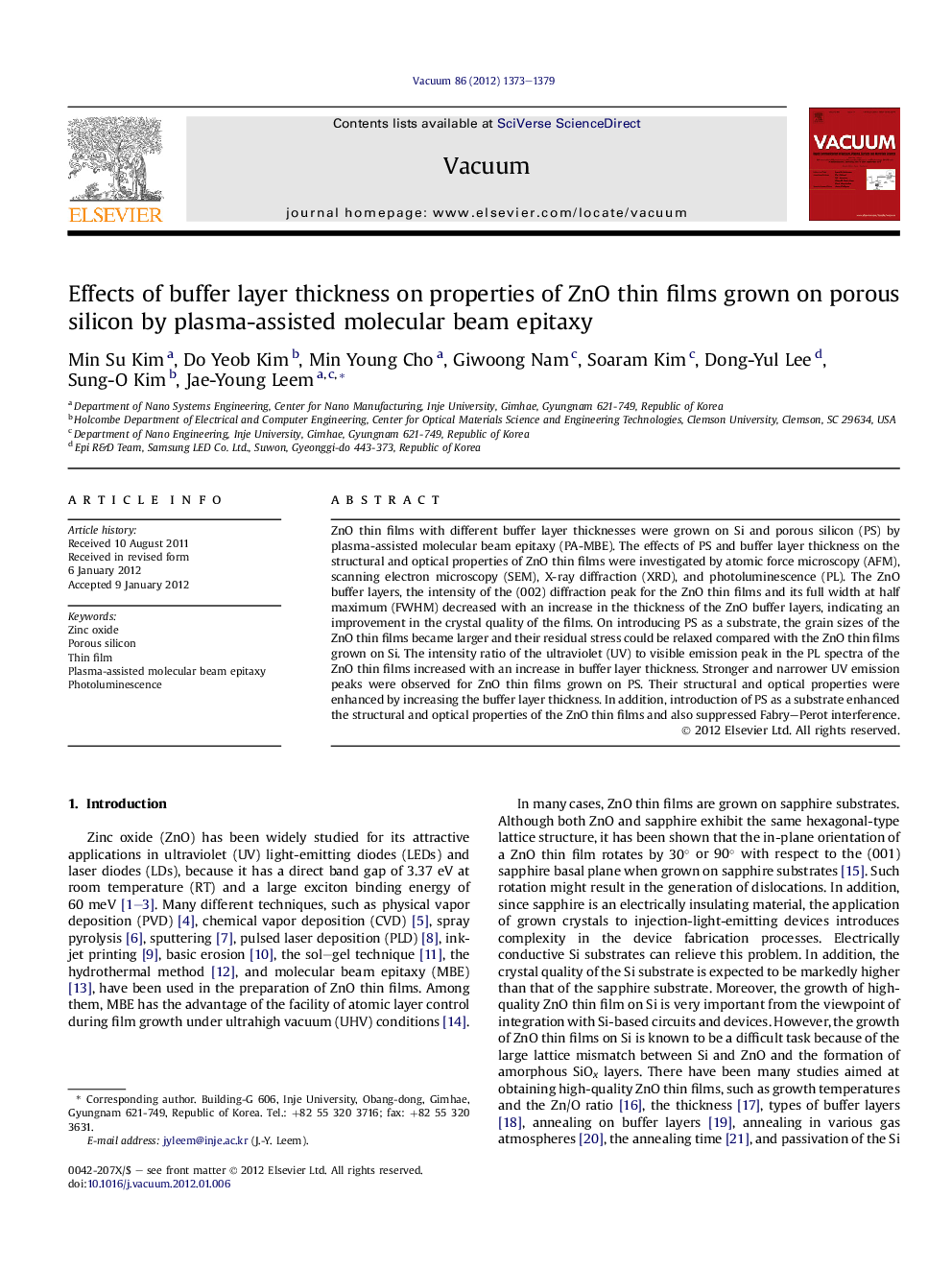| Article ID | Journal | Published Year | Pages | File Type |
|---|---|---|---|---|
| 1690733 | Vacuum | 2012 | 7 Pages |
ZnO thin films with different buffer layer thicknesses were grown on Si and porous silicon (PS) by plasma-assisted molecular beam epitaxy (PA-MBE). The effects of PS and buffer layer thickness on the structural and optical properties of ZnO thin films were investigated by atomic force microscopy (AFM), scanning electron microscopy (SEM), X-ray diffraction (XRD), and photoluminescence (PL). The ZnO buffer layers, the intensity of the (002) diffraction peak for the ZnO thin films and its full width at half maximum (FWHM) decreased with an increase in the thickness of the ZnO buffer layers, indicating an improvement in the crystal quality of the films. On introducing PS as a substrate, the grain sizes of the ZnO thin films became larger and their residual stress could be relaxed compared with the ZnO thin films grown on Si. The intensity ratio of the ultraviolet (UV) to visible emission peak in the PL spectra of the ZnO thin films increased with an increase in buffer layer thickness. Stronger and narrower UV emission peaks were observed for ZnO thin films grown on PS. Their structural and optical properties were enhanced by increasing the buffer layer thickness. In addition, introduction of PS as a substrate enhanced the structural and optical properties of the ZnO thin films and also suppressed Fabry–Perot interference.
► ZnO films were grown on porous silicon with buffer layer by molecular beam epitaxy. ► Properties of the ZnO films were enhanced as the buffer layer thickness increased. ► The properties were improved by introducing porous silicon as a substrate. ► Fabry–Perot interference was strongly suppressed by the introducing porous silicon.
